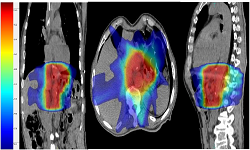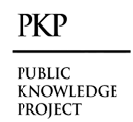Using Stereotactic Body Radiotherapy (SBRT) for Pancreas Cancer: Adjuvant therapy (AT), Intensity Modulated Radiation Therapy (IMRT) and Case Examples
Keywords:
Stereotactic Body Radiotherapy (SBRT), Pancreas Cancer, Adjuvant therapy (AT), (IMRT).Abstract
In America, pancreatic cancer ranks as the fourth most common killer. A
dismal outlook awaits patients diagnosed with pancreatic cancer. When diagnosed, most
individuals have tumours that cannot be removed. The clinical experience with stereotactic
body radiation (SBRT) for pancreatic cancer has demonstrated excellent local control, which
is very encouraging. Intensive systemic chemotherapy can be maintained during SBRT's
brief treatment duration, which is a major benefit. Pancreatic adenocarcinoma patients have
just one curative therapy option, and that is surgery. Rates of local recurrence and/or distant
metastases are still high, leading to poor long-term results, even when patients who are
considered resectable undergo rigors surgical care. Patients who have undergone resection
have been the focus of research into adjuvant therapies (ATs), which include chemotherapy
and chemoradiation therapy (CRT), with the goal of improving survival rates and reducing
recurrence rates. Evidence for adjuvant radiation therapy (RT) is inconsistent, in contrast to
that for adjuvant chemotherapy, which consistently improves results. Radiation has shown
promise in improving local control, but this has not necessarily translated into better survival
rates for patients. Limitations in generalizability stem from early trials' use of less-than-ideal
radiation methods. More optimised RT techniques are being used in recent and continuing
trials to elucidate its significance in therapeutic strategies. New radiation methods are also
being studied, including stereotactic body RT (SBRT) and intensity modulated RT (IMRT).
These efforts are being made in the hopes that they may decrease toxicity rates and enhance
disease-related outcomes. Controversy surrounds adjuvant RT's function. Due to their use of
what is now known as sub-optimal RT, early trials were defective and had inconsistent
outcomes. Current RTOG 08-48 and other adjuvant RT trials use evidence-based volume
targets and strict quality control measures. The function of adjuvant radiation in patients
with resected PC will be better understood based on the findings of this research. The
potential for increasing the therapeutic window and bettering disease outcomes is held by
the incorporation of contemporary radiation techniques like SBRT and IMRT, which
maximise dosage to target volumes while minimising dose to normal tissues.
Downloads

Downloads
Published
How to Cite
Issue
Section
License

This work is licensed under a Creative Commons Attribution 4.0 International License.
Current Clinical and Medical Education













